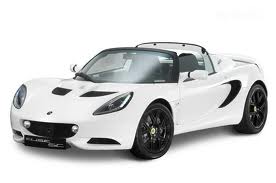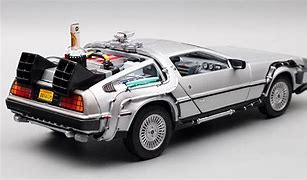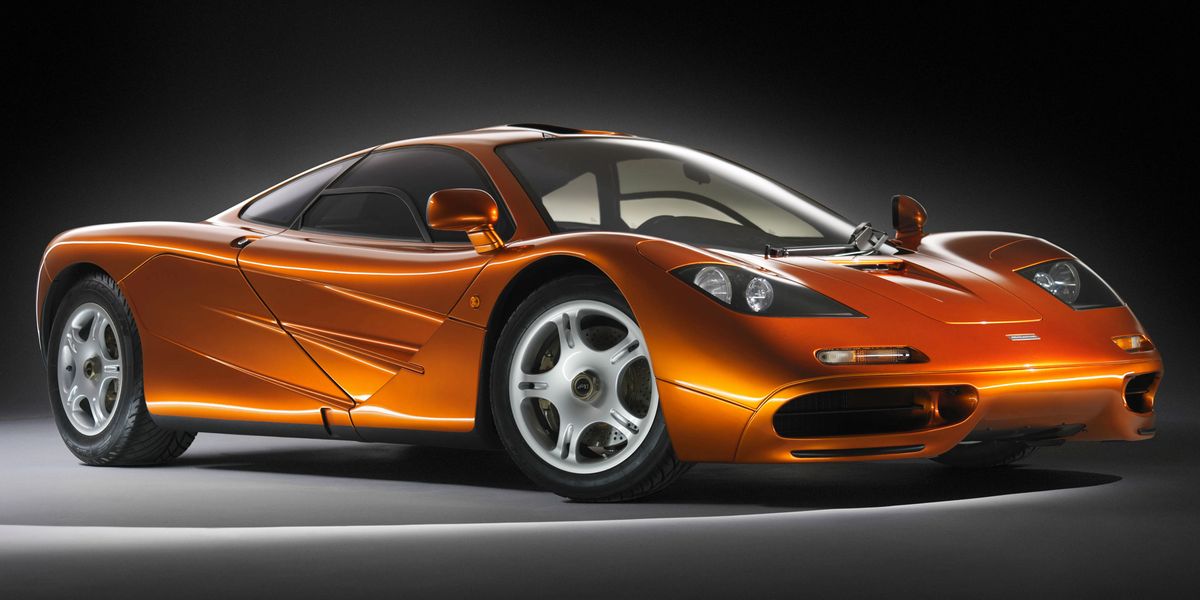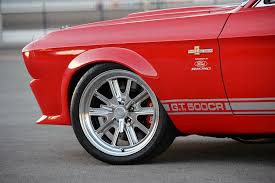

Lotus Elise SC 1.8
Engine: Supercharged Petrol | 1796cc 16v St4
Top Speed: 148 mph
0-60mph: 4.40 seconds

Renault Megane RS 1.8 Turbo 280
Engine: Turbo Petrol | 1798cc 16v St4
Top Speed: 254.2 kph
0-100kph: 6.0 seconds
The car manufacturer BMW has made an important impact on the automotive world. In this article we will give a brief but detailed history of the BMW marque. We will look at the origins of BMW looking at who, why, where and when BMW was founded. We'll look at the design of the iconic BMW logo and what are some the more significant BMW models. We'll take a glance at what racing history the BMW has and who some of the most important people have been in the history of BMW over the years.
Bayerische Motoren Werke, known worldwide as BMW, was founded in Munich, Germany, in 1916. The company traces its roots back to the early 20th century, when aircraft engine manufacturer Rapp Motorenwerke faced financial difficulties. The circumstances surrounding BMW's foundation involve a series of mergers, acquisitions, and transformations that have shaped the brand into what it is today.
The origins of BMW can be traced to Karl Rapp, who established Rapp Motorenwerke in 1913. The company primarily focused on producing aircraft engines for the German military during World War I. However, Rapp faced financial challenges and sought external support to keep the business afloat.
In 1916, Franz Josef Popp, an Austrian engineer, and Max Friz, a talented engine designer, joined forces with Rapp, and the three men formed Bayerische Motoren Werke. The new company's primary objective was to continue producing aircraft engines, but it soon expanded its focus to include motorcycles and automobiles.
The decision to diversify into motorcycles and automobiles came in the wake of Germany's surrender in World War I, when the Treaty of Versailles imposed severe restrictions on the production of aircraft engines. As a result, BMW shifted its attention to the production of motorcycles, launching its first motorcycle, the BMW R32, in 1923.
Over the following years, BMW gained a reputation for producing reliable, high-performance motorcycles that became popular among enthusiasts. The success of their motorcycles paved the way for BMW to venture into the automobile market.
BMW's entry into the automotive industry came in 1928 when the company acquired Fahrzeugfabrik Eisenach, a German automobile manufacturer. This acquisition gave BMW access to the Dixi, a small car based on the Austin 7. BMW continued to produce and improve upon the Dixi, eventually releasing its own models under the BMW name.
BMW's reputation for quality engineering, precise craftsmanship, and innovation continued to grow throughout the 20th century. The company gained international recognition for its performance-oriented vehicles, particularly in the sports sedan segment. Models such as the BMW 3 Series, introduced in 1975, and the BMW 5 Series, introduced in 1972, solidified BMW's position as a leader in the luxury automotive market.
BMW's success is rooted in its commitment to technological advancements and a focus on driver-centric experiences. The company has consistently pushed the boundaries of automotive engineering, introducing features such as advanced suspension systems, efficient engines, and cutting-edge infotainment systems.
Today, BMW stands as one of the world's most prestigious and influential automotive brands. Its headquarters remain in Munich, Germany, and the company continues to produce a wide range of vehicles, including sedans, coupes, SUVs, and electric models.
Over the years, BMW has solidified its reputation for delivering vehicles that blend performance, luxury, and cutting-edge technology. The brand's commitment to the "Ultimate Driving Machine" philosophy has earned it a dedicated following of enthusiasts who appreciate BMW's emphasis on delivering a dynamic and engaging driving experience.
From its humble beginnings as an aircraft engine manufacturer, BMW has evolved into a global powerhouse in the automotive industry. Its rich history, marked by mergers, acquisitions, and a relentless pursuit of innovation, has propelled BMW to the forefront of automotive excellence.
The BMW logo is an iconic emblem that represents one of the world's most renowned luxury automobile manufacturers. The logo has evolved over the years, reflecting the brand's rich history and embodying its core values. Let's delve into the history of the BMW logo:
The original BMW logo, introduced in 1917, featured a circular design with a black ring and a blue and white checkerboard pattern in the center. This design was inspired by the logo of Rapp Motorenwerke, one of BMW's predecessor companies. The blue and white color scheme was derived from the colors of the Bavarian flag, representing BMW's roots in Bavaria, Germany.
In 1923, the BMW logo underwent a significant transformation. The circular shape was maintained, but the blue and white checkerboard pattern was replaced with the now-familiar white and blue quadrants. This change was intended to create a more sophisticated and modern logo that would resonate with the evolving brand image.
Over the years, the BMW logo has seen subtle refinements, but its fundamental elements have remained consistent. The logo has become synonymous with BMW's commitment to quality, performance, and innovation. It represents the brand's precision engineering, dynamic driving experience, and enduring legacy.
The logo's blue and white color scheme has become iconic, representing the brand's Bavarian heritage and evoking a sense of elegance and sophistication. The circular shape symbolizes continuity and the pursuit of perfection, while the white and blue quadrants create a visually striking and instantly recognizable emblem.
Today, the BMW logo stands as a symbol of luxury, craftsmanship, and automotive excellence. It represents the brand's unwavering commitment to innovation and its position as a leader in the global automotive industry. The logo is proudly displayed on every BMW vehicle, serving as a mark of distinction and a testament to the brand's enduring legacy.
BMW, the renowned German automobile manufacturer, has produced a lineup of significant models throughout its history. From its early days as an aircraft engine manufacturer to its present position as a global luxury brand, BMW's vehicles have exemplified the brand's commitment to performance, innovation, and timeless design.
One of BMW's most iconic models is the BMW 2002, introduced in 1968. The 2002 is credited with establishing the "sports sedan" segment, blending compact dimensions with thrilling performance. With its powerful engine, responsive handling, and distinctive styling, the 2002 appealed to driving enthusiasts who sought a balance between everyday practicality and driving pleasure. The 2002 set the stage for BMW's future success in the compact sports sedan market and remains a beloved classic among BMW enthusiasts.
In the 1970s, BMW introduced the BMW 3 Series, a model that would become synonymous with the brand's image and success. Launched in 1975, the first-generation 3 Series exemplified BMW's commitment to delivering a sporty driving experience in a compact package. With its precise handling, balanced chassis, and a range of engines to suit different driving preferences, the 3 Series quickly gained a reputation for being the benchmark in the sports sedan category. The 3 Series has evolved over the years, becoming larger and more technologically advanced, but it has maintained its essence as the epitome of BMW's driving dynamics.
Moving into the 1980s, BMW unveiled the BMW M3, a high-performance variant of the 3 Series. First introduced in 1986, the M3 was developed as a homologation special to compete in touring car racing. The M3 combined a powerful engine, sport-tuned suspension, and aggressive styling to deliver an exhilarating driving experience. With its success on the racetrack and its reputation for performance on the road, the M3 became an iconic symbol of BMW's M Division and a coveted sports car for driving enthusiasts around the world. The M3 lineage has continued to evolve with each new generation, maintaining its position as one of the most respected and sought-after performance cars in the market.
In the 1990s, BMW introduced the BMW Z3, a two-seater sports car that captured the imagination of drivers seeking open-top driving enjoyment. The Z3, first appearing in the James Bond film "GoldenEye," featured classic roadster styling, agile handling, and a range of engine options. Its introduction marked BMW's foray into the roadster market and laid the foundation for the Z series of sports cars. The Z3 was followed by the BMW Z4, which offered an even more refined driving experience and a design language that blended elegance and athleticism. The Z series exemplified BMW's dedication to creating engaging and dynamic sports cars.
In the 21st century, BMW embraced the shift towards electric mobility with the introduction of the BMW i3. Released in 2013, the i3 was BMW's first fully electric vehicle designed from the ground up. It showcased BMW's expertise in lightweight construction and sustainable materials, offering impressive acceleration and an extended electric range. The i3 marked a significant step in BMW's commitment to reducing carbon emissions and providing an eco-friendly driving experience without compromising on performance or luxury.
Another notable model from recent years is the BMW 7 Series, representing BMW's flagship luxury sedan. The 7 Series has always been at the forefront of BMW's technological advancements and luxurious features. With its refined design, advanced safety systems, cutting-edge infotainment, and a range of powerful engine options, the 7 Series showcases BMW's dedication to delivering a luxurious and comfortable driving experience. The latest generations of the 7 Series also incorporate hybrid powertrains, reflecting BMW's commitment to sustainability and offering an alternative for environmentally conscious luxury car buyers.
These models represent just a glimpse into BMW's significant lineup of vehicles. From the iconic 2002 and the influential 3 Series to the high-performance M3, the stylish Z series, the innovative i3, and the luxurious 7 Series, each model showcases BMW's commitment to delivering driving pleasure, exceptional performance, and cutting-edge technology. BMW's dedication to craftsmanship, innovation, and the pursuit of driving excellence has made it a leader in the automotive industry and continues to shape the future of mobility.
BMW, the renowned German luxury automobile manufacturer, owes much of its success and reputation to the contributions of several significant individuals who have played pivotal roles in shaping the brand. From visionary founders to talented engineers and designers, these individuals have left an indelible mark on BMW's history and legacy. Let's delve into the lives and achievements of some of BMW's most significant people:
1. Karl Rapp (1882-1962): Karl Rapp was one of the key figures in the early years of BMW. In 1913, he founded Rapp Motorenwerke, which later became Bayerische Motoren Werke (BMW). Rapp's expertise in aircraft engines laid the foundation for BMW's engineering prowess, establishing the brand's commitment to innovation and performance.
2. Franz Josef Popp (1886-1954): Franz Josef Popp played a critical role in the establishment and growth of BMW. As one of the founding members of the company, Popp served as its first managing director. He was instrumental in guiding BMW through its formative years and steering the company towards success.
3. Max Friz (1883-1966): Max Friz was a talented engineer who joined BMW in 1917. He is credited with designing the iconic BMW boxer engine, which became a hallmark of the brand. Friz's innovative engine designs, including the BMW R32 motorcycle engine, laid the foundation for BMW's success in the field of motorized transportation.
4. Fritz Fiedler (1889-1963): Fritz Fiedler was a visionary engineer who joined BMW in 1927. He played a crucial role in developing BMW's first sports car, the BMW 328. Fiedler's engineering expertise and attention to detail resulted in a lightweight, aerodynamic design that set new standards for performance and handling.
5. Eberhard von Kuenheim (1928-2018): Eberhard von Kuenheim served as the CEO of BMW from 1970 to 1993, a period of significant growth and transformation for the company. Under his leadership, BMW expanded its model lineup, invested in new technologies, and established itself as a global luxury brand. Von Kuenheim's strategic vision and commitment to quality played a crucial role in BMW's rise to prominence.
6. Chris Bangle (1956-present): Chris Bangle, an American designer, served as BMW's Chief of Design from 1992 to 2009. He made a significant impact on the brand's design language, introducing bold and innovative styling elements. Bangle's designs, such as the BMW E65 7 Series and the E60 5 Series, sparked controversy and set the stage for BMW's modern design identity.
7. Harald Krüger (1965-present): Harald Krüger served as the CEO of BMW from 2015 to 2019, overseeing a period of technological advancements and expanding the brand's electric and autonomous vehicle offerings. Krüger's leadership and focus on sustainability positioned BMW as a frontrunner in the evolving automotive landscape.
These individuals, among many others, have played integral roles in shaping BMW's success and reputation. Their visionary thinking, engineering expertise, and design prowess have contributed to BMW's position as a leading luxury automobile manufacturer. BMW's commitment to performance, innovation, and driving pleasure continues to be carried forward by the talented individuals who contribute to the brand's ongoing legacy.
BMW, the renowned German automobile manufacturer, has a rich and illustrious racing history that spans several decades and encompasses various motorsport disciplines. From touring car championships to endurance races, BMW's motorsport endeavors have showcased the brand's engineering prowess, performance excellence, and competitive spirit.
One of BMW's most significant achievements in racing came in the 1970s with its participation in the European Touring Car Championship (ETCC). BMW's legendary 3.0 CSL, popularly known as the "Batmobile" due to its distinctive aerodynamic bodywork, dominated the ETCC during this period. The 3.0 CSL was renowned for its powerful engine, lightweight construction, and advanced aerodynamics. It secured numerous victories, including overall wins at the 24 Hours of Spa and the 24 Hours of Daytona. The success of the 3.0 CSL firmly established BMW as a force to be reckoned with in touring car racing and laid the foundation for BMW's future motorsport endeavors.
In the 1980s, BMW's focus shifted to Formula One. Collaborating with the Brabham team, BMW supplied turbocharged engines that propelled the Brabham-BMW cars to notable successes. In 1983, Nelson Piquet drove a Brabham-BMW to win the Driver's Championship, marking a significant milestone for BMW in the pinnacle of motorsport. The partnership continued until 1987, and although BMW's Formula One venture was relatively short-lived, it showcased the brand's technical expertise and highlighted the performance capabilities of their engines.
BMW's involvement in touring car racing continued to evolve and flourish in the 1990s and 2000s. The BMW 3 Series became the marque's weapon of choice in various touring car championships worldwide. In particular, the German Touring Car Masters (DTM) saw BMW's return to the series in the early 2000s, where the BMW M3 became a formidable contender. BMW enjoyed considerable success in the DTM, securing multiple Driver's Championships and Manufacturer's Championships. The BMW M3, with its powerful engines, aerodynamic enhancements, and precision handling, proved to be a dominant force on the track, further solidifying BMW's reputation as a leader in touring car racing.
Endurance racing has also been a significant arena for BMW's motorsport achievements. One of BMW's notable triumphs came at the 24 Hours of Le Mans. In 1999, the BMW V12 LMR emerged victorious, capturing the overall win at this prestigious endurance race. The V12 LMR showcased BMW's engineering prowess and reliability, proving its capabilities against formidable competition. This victory marked BMW's return to the forefront of endurance racing and highlighted the brand's commitment to pushing the limits of performance and technological innovation.
More recently, BMW has been active in GT racing, competing in championships such as the FIA World Endurance Championship (WEC) and the IMSA WeatherTech SportsCar Championship. BMW's GT cars, including the BMW M6 GT3 and the BMW M8 GTE, have demonstrated their performance capabilities on renowned tracks worldwide. These powerful GT machines, with their aerodynamic designs, advanced technology, and BMW's signature driving dynamics, have consistently achieved success, earning podium finishes and championships in various GT racing series.
Beyond the track, BMW has also embraced the electric racing revolution. In 2014, BMW launched the BMW i Andretti Motorsport team to compete in the ABB FIA Formula E Championship, an all-electric racing series. BMW's participation in Formula E showcases the brand's commitment to sustainable mobility and pushing the boundaries of electric performance. The BMW i Andretti Motorsport team has achieved notable successes, including race wins and podium finishes, further solidifying BMW's position at the forefront of electric racing.
BMW's racing history is a testament to the brand's passion for performance, engineering excellence, and continuous pursuit of technological advancements. Whether on the circuit or the endurance race track, BMW has consistently demonstrated its competitive spirit and the ability to produce high-performance machines. The brand's success in various motorsport disciplines has not only enhanced its reputation but has also influenced the development of its road cars, ensuring that BMW vehicles deliver exhilarating performance and driving pleasure to enthusiasts around the world.
BMW, the renowned German automobile manufacturer, is synonymous with performance, luxury, and driving pleasure. With a history that spans over a century, BMW has established itself as a global leader in the automotive industry, consistently pushing the boundaries of innovation and engineering excellence.
BMW's line-up of vehicles embodies the brand's commitment to precision, craftsmanship, and dynamic performance. From sporty sedans like the BMW 3 Series to luxurious SUVs like the BMW X5, each BMW model showcases a perfect balance of power, agility, and elegance. The brand's iconic kidney grille, sleek lines, and attention to detail create an unmistakable visual identity that resonates with enthusiasts worldwide.

Lotus Elise SC 1.8
Engine: Supercharged Petrol | 1796cc 16v St4
Top Speed: 148 mph
0-60mph: 4.40 seconds

Renault Megane RS 1.8 Turbo 280
Engine: Turbo Petrol | 1798cc 16v St4
Top Speed: 254.2 kph
0-100kph: 6.0 seconds



















